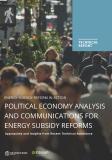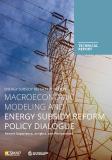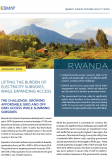Publications
This is the first in the series of 10 good practice notes under the Energy Sector Reform Assessment Framework (ESRAF), an initiative of the Energy Sector Management Assistance Program (ESMAP) of the World Bank. ESRAF proposes a guide to analyzing energy subsidies, the impacts of subsidies and their reforms, and the political context for reform in developing countries. This note provides guidance on how to approach and assess energy subsidies, quantifying them where possible. it suggests a definition of subsidies and describes options for categorizing and measuring subsidies. it also outlines policy issues to consider in reforming the subsidies in developing countries.
ESRAF Good Practice Overview: Guidance for Comprehensive Energy Subsidy Reforms
ESRAF Good Practice Note 1: Identifying and Quantifying Energy Subsidies
ESRAF Good Practice Note 2: Assessing the Fiscal Cost of Subsidies and Fiscal Impact of Reform
ESRAF Good Practice Note 6 to come: Identifying the Impacts of Higher Energy Prices on Firms and Industrial Competitiveness
ESRAF Good Practice Note 7: Modeling Macroeconomic Impacts and Global Externalities
ESRAF Good Practice Note 10: Designing Communication Campaigns for Energy Subsidy Reform
Kojima, Masami. 2017. Identifying and Quantifying Energy Subsidies: Energy Subsidy Reform Assessment Framework (ESRAF) Good Practice Note 1. ESMAP Paper. Washington, D.C.: World Bank Group.
https://openknowledge.worldbank.org/entities/publication/cb55bf07-e9d9-5195-abfe-2cdc7507b388



